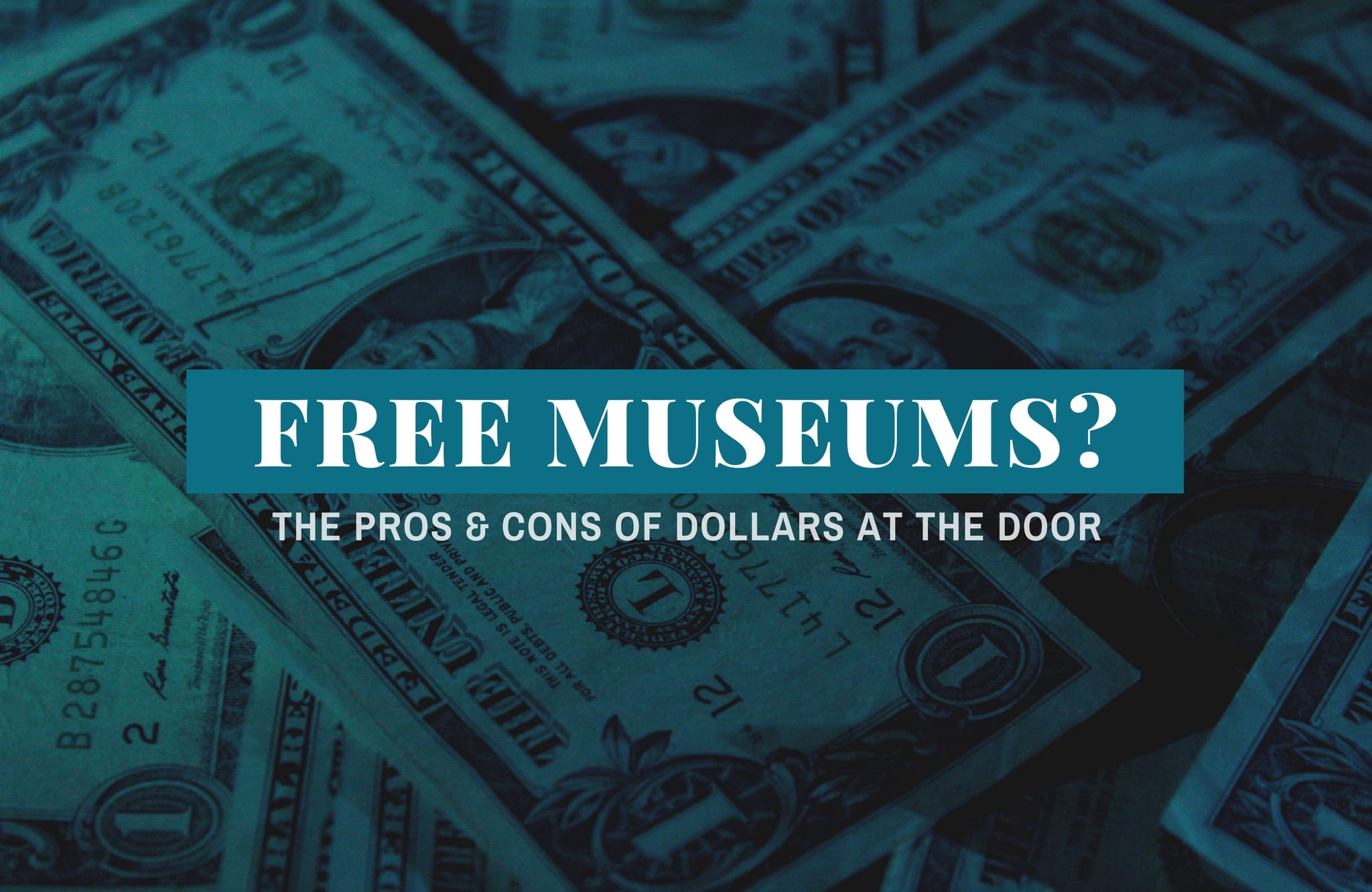Free Museums? The Pros and Cons of Dollars at the Door

Free Museums? The Pros and Cons of Dollars at the Door
November 22, 2017 by Taylor Studios
Should museums be free? The quick and easy answer is: ABSOLUTELY! Meaning that, if we all had our druthers, all museums would be free, forever and ever (…and so would many other things, for that matter).
But of course, it’s not that simple.
Charging for admission to museums is a hotly debated topic all around the world. For some, philosophy wins out – they just can’t reconcile an educational mission with an entrance fee of any kind. I’ll admit I am sympathetic to this view. However, others take a more conditional approach, seeing entrance fees as a revenue source that would be downright irresponsible to not at least consider—especially in tough financial times. I can’t fault this thinking either.
The truth is, there is likely not a one-size-fits-all answer. But, if this is a question your organization is considering, it may be useful to weigh these potential pros and cons:
If your museum is free (or going to be), you may not be giving up as much income as you think. , nationally, admission fees make up only about 5% of the general operating budgets for art museums. And if you have other streams of income on the premises (such as concessions or a gift shop), that money might make its way right back to you through another channel.
In any case, admission fees alone aren’t likely going to be enough to sustain you. The of Washington D.C. has made unfortunate headlines lately for its financial struggles, despite charging $15-$25 per ticket—nothing to sneeze at, especially when it’s a stone’s throw from .
There is something to be said, at least anecdotally, about appreciating an experience more when you’ve literally “invested” in it – even if it’s just a nominal amount. We definitely see this psychology at play in other aspects of our lives, whether it’s paying top dollar for concert tickets or joining (and actually going to) a $10-a-month gym.
As , there are plenty of appealing, warm-and-fuzzy reasons for visitors to feel good about spending money to go to museums: “You are buying the future, slapping a preservation order on the lovely and the magical.”
For public museums and other nonprofits that enjoy special tax status, there can be a perception among the public that they’re “already paying for” the organization in the form of foregone tax revenues. If you think of a museum as serving a similar societal function as a library or school, charging admission is, as Knight writes, “a kind of ‘double jeopardy’ — and it is one that falls harder on those who can least afford it.”
, “In tough times, is it better for museums to sell off their treasures, to cut back staff, to shrink and dwindle—or to charge an entrance fee?” Well, when you put it that way…a few bucks a head doesn’t sound so bad.
Does eliminating admission fees boost attendance? This is perhaps the most central—and the most controversial—question in this debate.
It can and does happen; for example, as , when UCLA’s Hammer Museum did away with entrance fees, it saw attendance climb by 25% in just 10 months.
However, other research suggests that waiving admission doesn’t have a sustained impact on attendance over the long term. (Check out by Colleen Dilenschneider at Know Your Own Bone).
One thing that appears to be a bit more agreed-upon is that if an organization regularly charges admission, they will likely see at least “novelty” attendance spikes during special or occasional free-admission days.
If you feel inclined to drop your entrance fees permanently but can’t quite swing it on a practical level, this may be a good compromise: you can preserve admission as a revenue source generally, but still make opportunities for financially disadvantaged or underserved visitors to experience your site free of charge.
What do you think? Should—would—could—museums be forever free?